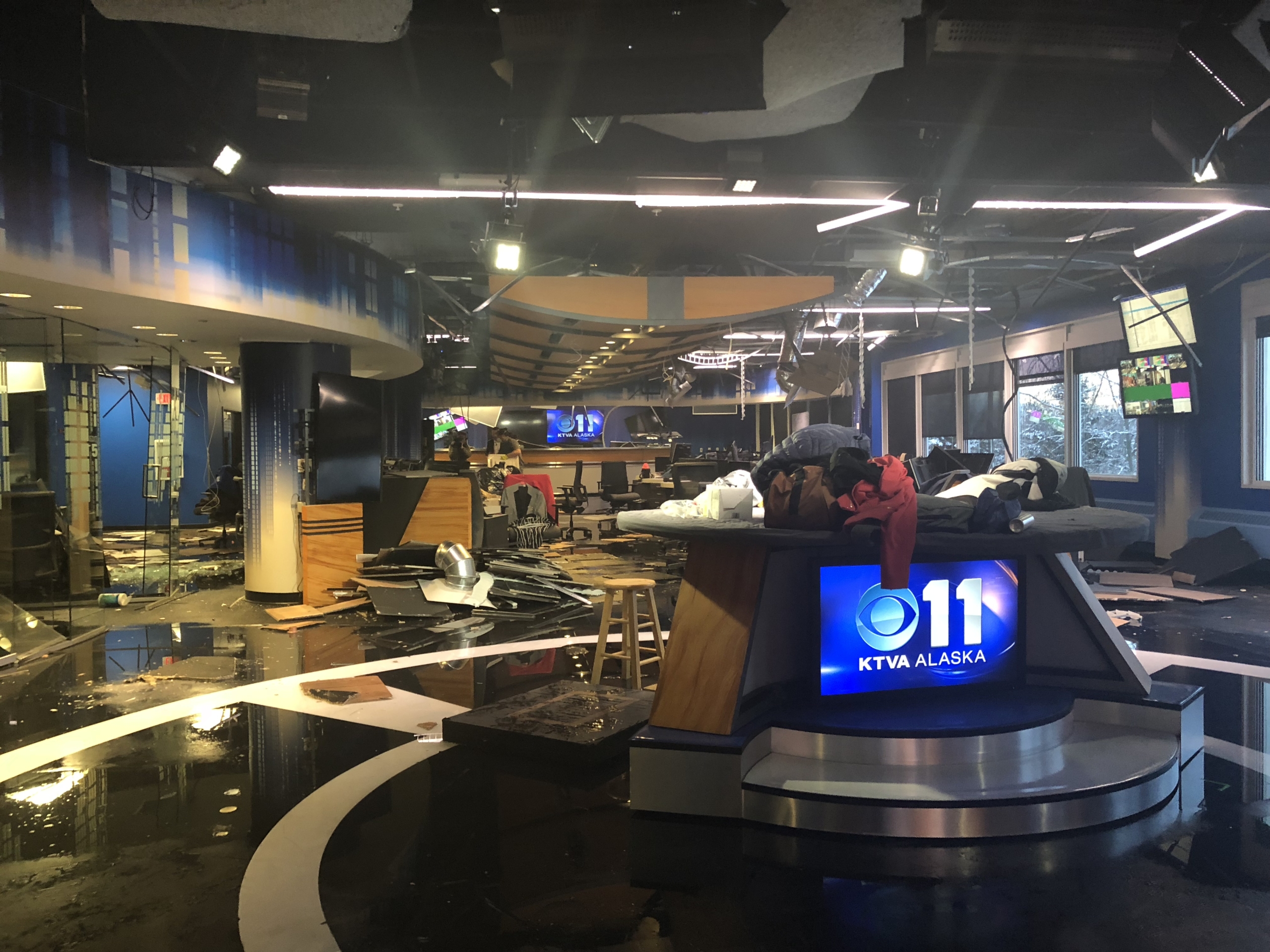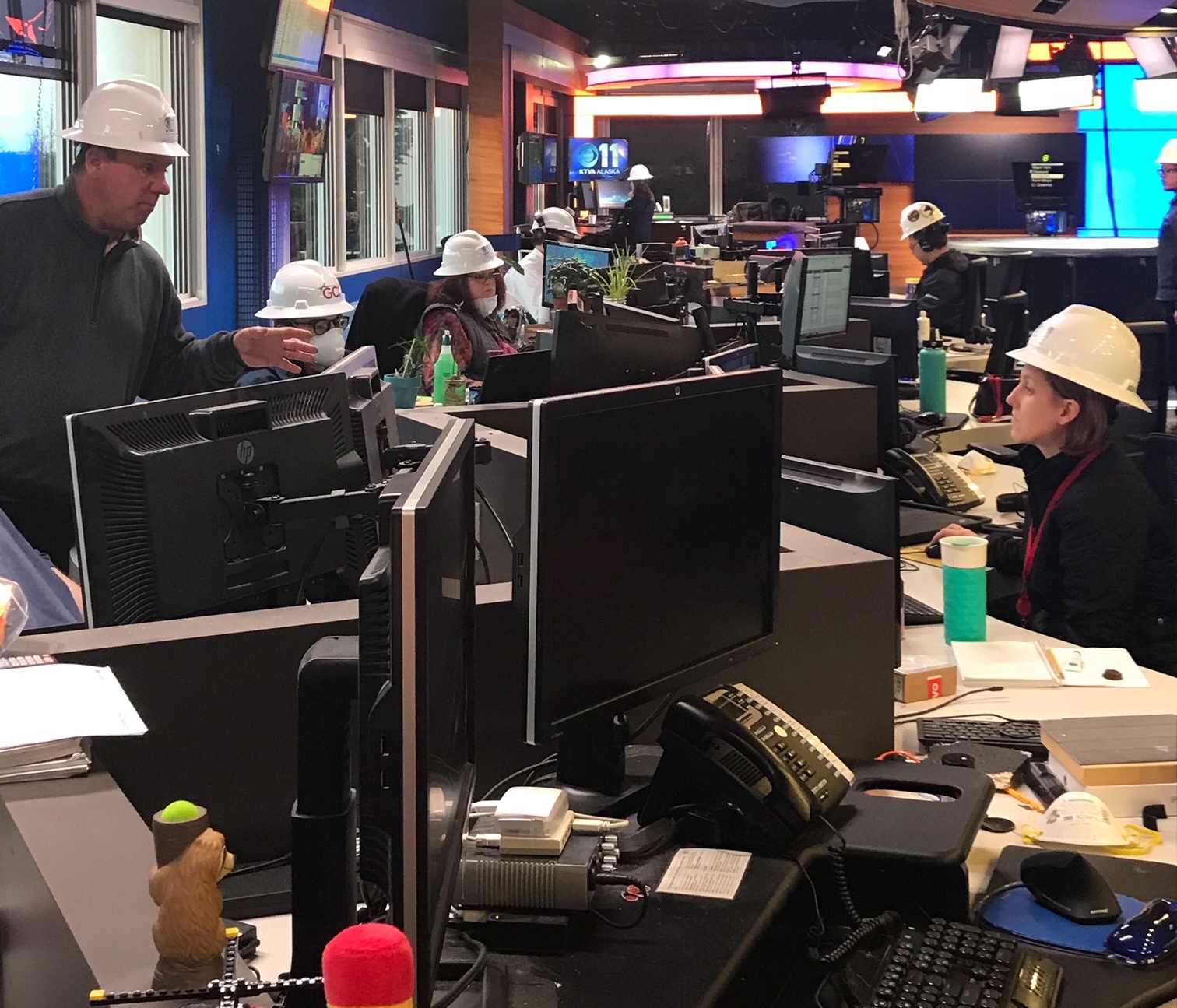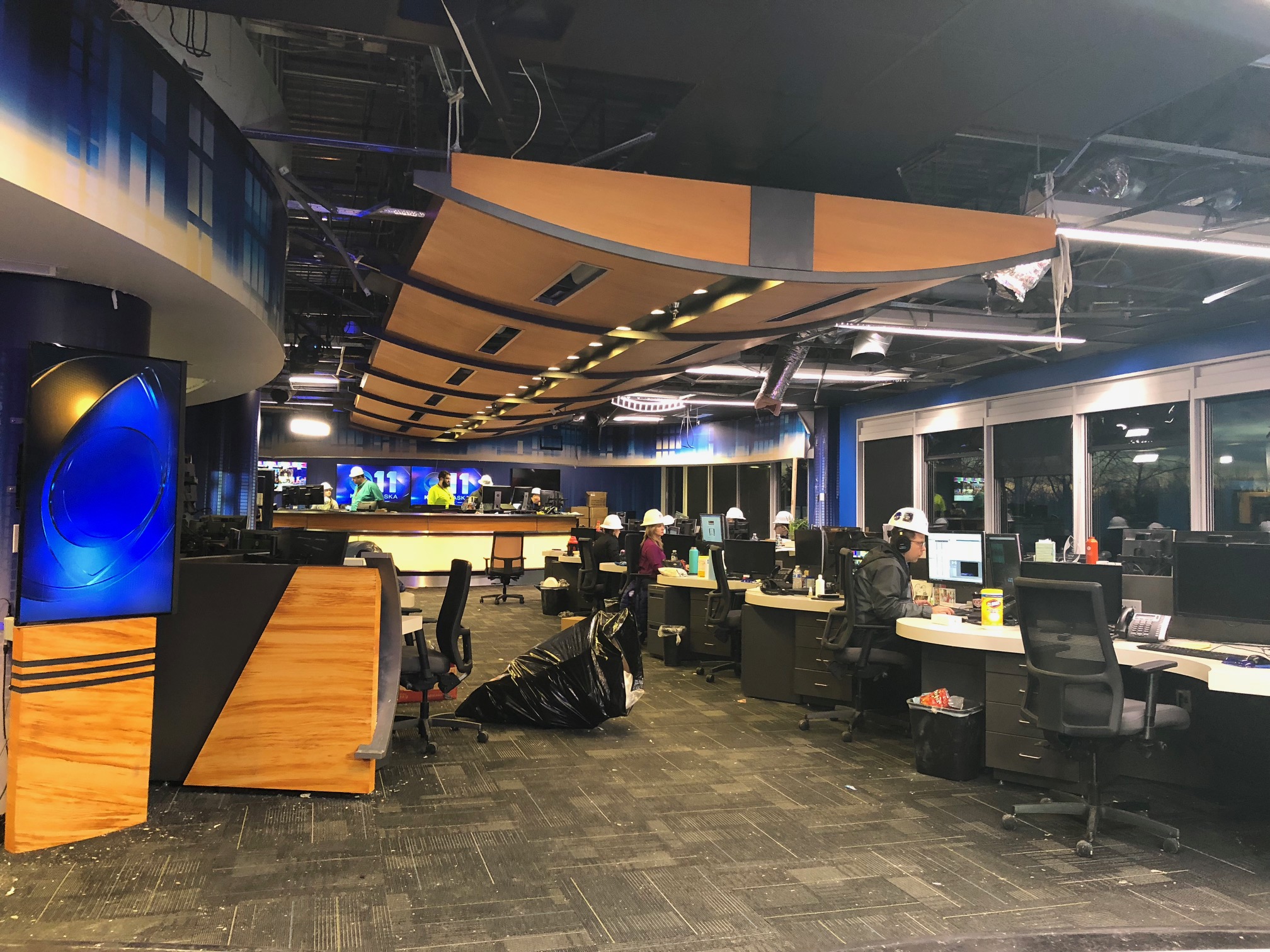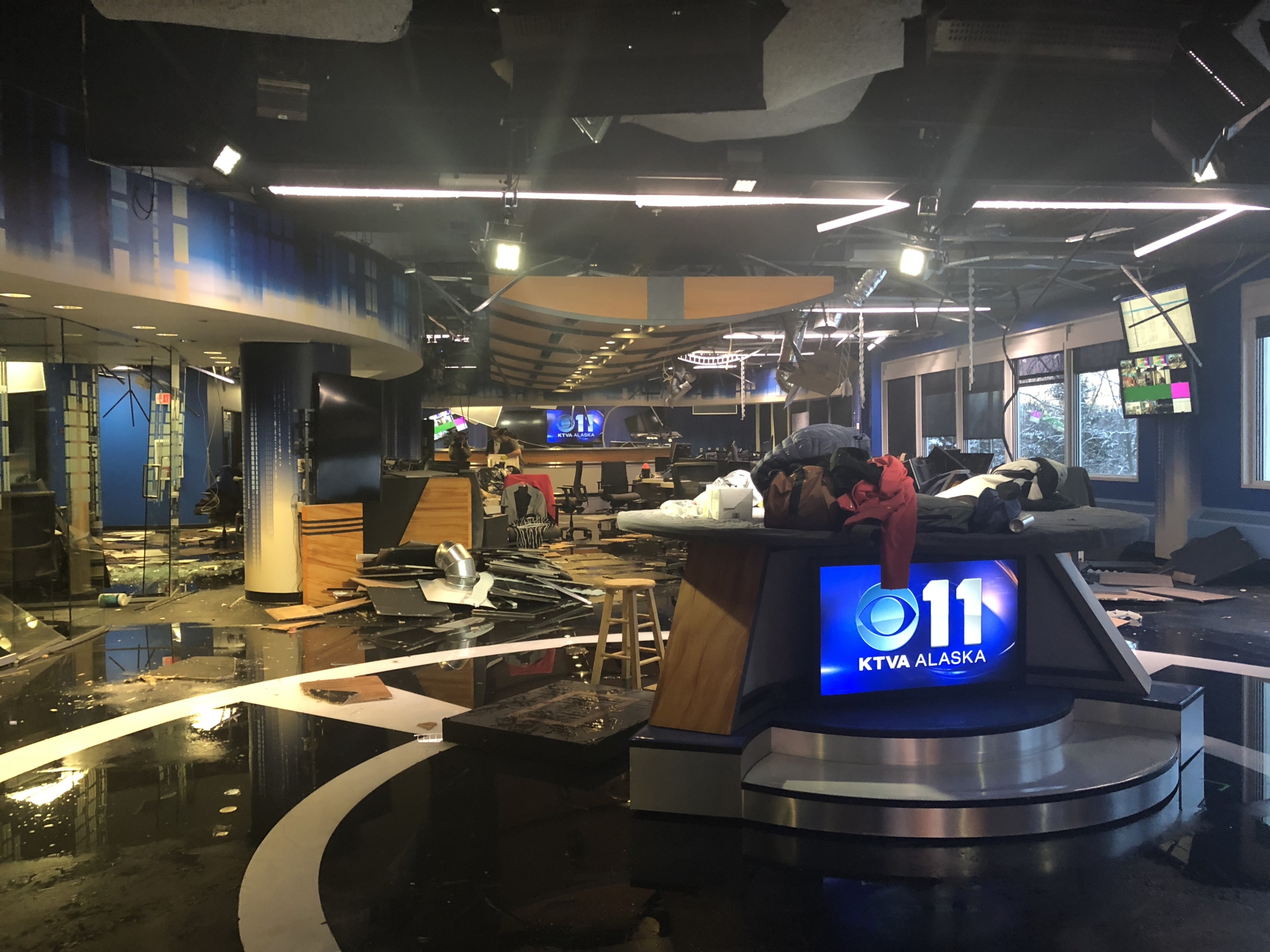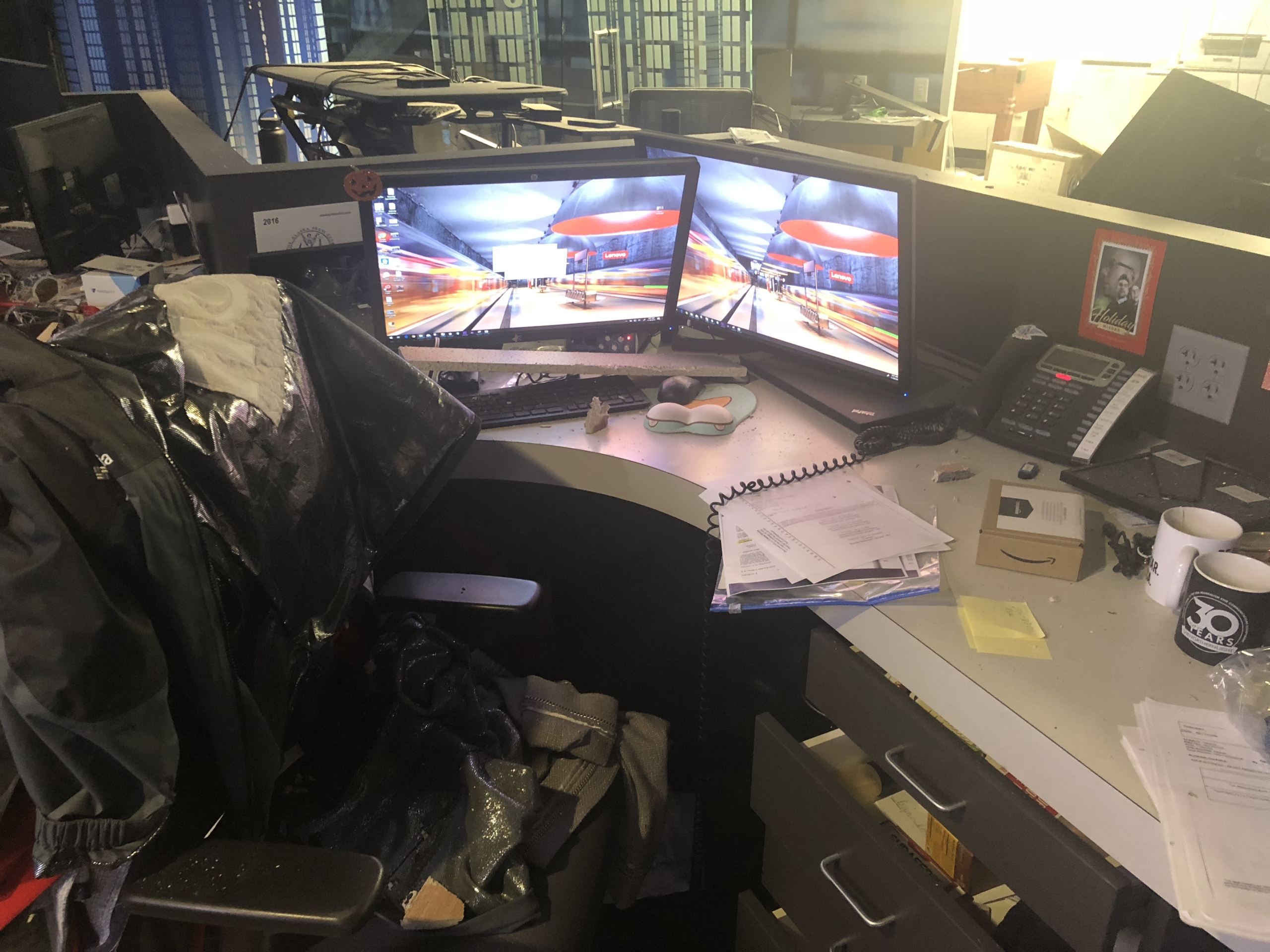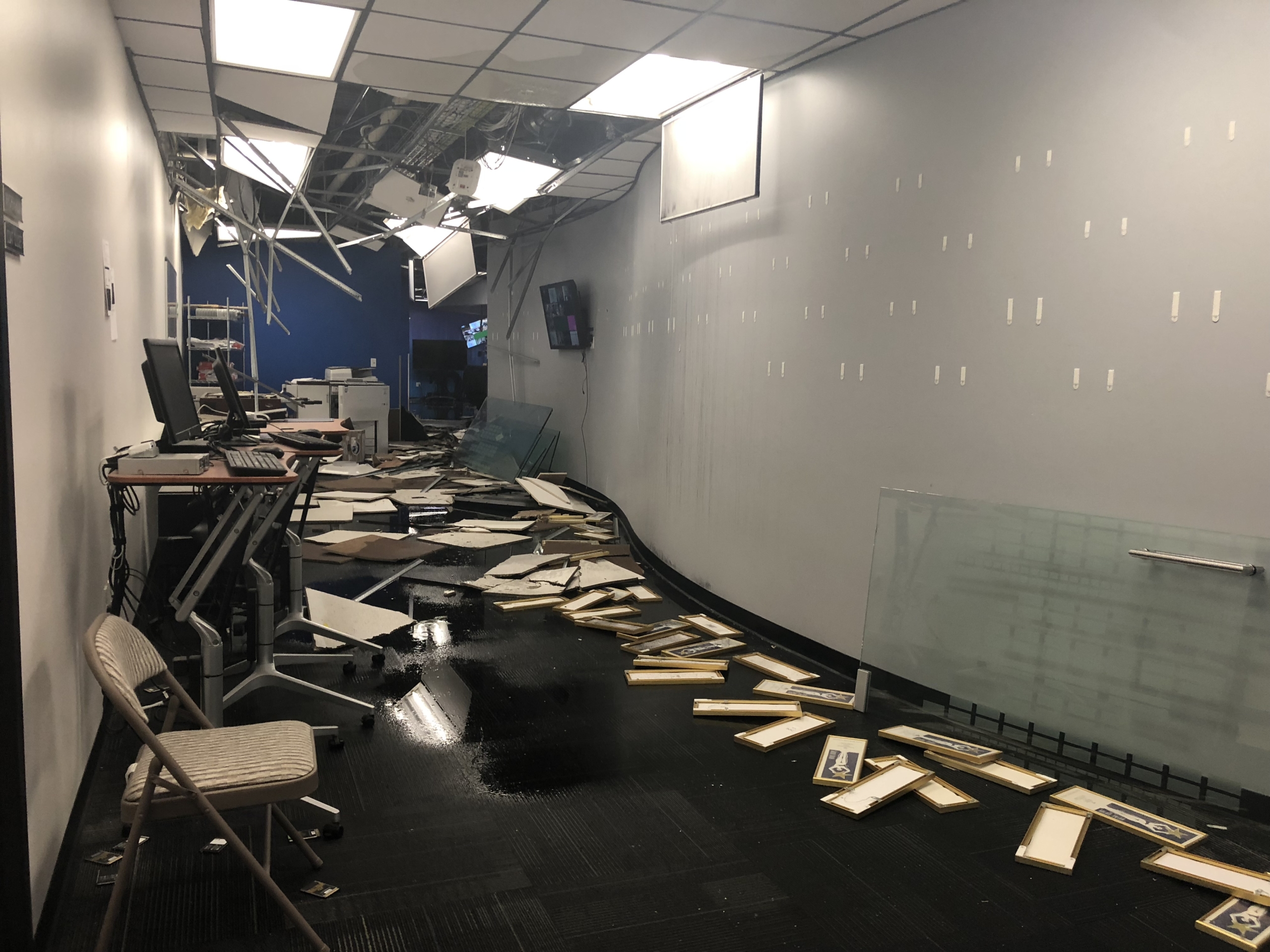“These things hit so fast,” Scott Jensen, the news content manager for KTVA in Anchorage, Alaska, says of the moment an earthquake struck his newsroom, last Friday morning.
Jensen had been about to send out the morning note about the day’s slated stories at the five-year-old CBS-affiliated television station when the quake struck, just 7.45 miles north of the city. The only other people around him were meteorologist Jeremy LaGoo and morning anchor John Thompson, who had just gotten off the air. Then the building started shaking and rocking.
As a former photojournalist, Jensen’s first reaction to the 7.0-magnitude earthquake wasn’t to find shelter, but to take his phone out and start recording. “I’m trying to do that, running around the front of the assignment desk, and I hear John yelling at Jeremy and me to get under the desk,” he says. “And that’s when it really started shaking. It was super violent.”
Crouched underneath, Jensen tried to hang on to his standing desk as he watched the newsroom’s lights go out, ceiling panels tumble down, and televisions dislodge from the wall. He heard glass panels shatter in the editing bays. “It’s super loud,” he tells CJR. “And then everything stops and the alarms are going off.”
Wow. @nickswannKTVA shot this footage from inside the @ktva building during this morning’s quake: pic.twitter.com/yvKF0mHItq
— Kirsten Swann (@kirsteswann) November 30, 2018
The earthquake also damaged the building’s roof, windows, and sprinkler system, which resulted in water flooding the newsroom’s floors. During a temporary evacuation into the snow and cold, Thompson and Lagoo kept reporting by broadcasting their observations on Facebook Live, as other coworkers navigated clogged roads and began arriving at the station. CBS National picked up the online stream as KTVA staff evacuated the building—a ten-minute process—then re-entered around 9:30am, to report on the extent of the damage.
Chief meteorologist Melissa Frey rushed so quickly to KTVA from her home that she arrived with her two small children, age 8 and 4. She wore her pajamas, snow boots, no makeup, and had her hair in a ponytail. “I wouldn’t want someone to see me at the grocery store like that,” she says, then pauses and laughs. “Let alone on live television.”
Caption: Meteorologists Jeremy LaGoo (left) and Melissa Frey on Facebook Live immediately after the earthquake showing the damage to KTVA’s newsroom.
After their building was damaged by an earthquake, @ktva is broadcasting on Facebook Live #anchorage #alaska #earth… https://t.co/lxwHPGAz0W
— Austin Kellerman (@AustinKellerman) November 30, 2018
Frey’s outfit may not have been ideal, but her previous experience working in Portland, Oregon, during a 2011 tsunami warning taught her the difference preparation could make. She had recently trained with the Red Cross, pre-made graphics for several different kinds of natural disasters, pre-organized her key contacts, and signed up for alerts from organizations like the National Tsunami Warning Center.
Crime and courts reporter Daniella Rivera’s typical 15-minute commute took three times as long, due to heavy traffic. When she arrived, she found the newsroom in total disarray and a piece of ceiling tile on her desk. Thompson and LaGoo continued to livestream directly to viewers, even while diving back under their desks during dozens of aftershocks and smaller quakes. “This isn’t too bad,” LaGoo remarked while squished next to Thompson. “There’s no place I’d rather be than here with John.” Rivera replied, “I’m impressed you both both fit.”
KTVA staff focused on providing essential information, such as school closures, safety advice, power outages, damaged roads and buildings, as well as government responses. Phone lines were down, but data and internet services were still up, which allowed Jensen to coordinate news crews at locations around the city, and KTVA’s staff to message each other using Slack.
Jensen, who grew up in Anchorage and has lived in the city most of his adult life, says the event on November 30 was the most violent earthquake he had ever experienced. Due to the location of two tectonic plates, earthquakes are common to Alaska. They include a 7.9-magnitude quake in January, a 7.1-magnitude one in 2016, and 15 smaller ones that occurred in the 36 hours before the major one on November 30.
After checking in with his family at home, Jensen stopped off at the military surplus store where he picked up 10 boxes of ready-to-eat meals. It was something he learned while working at the King 5 NBC-affiliate station in Seattle, which has its own earthquake preparation plans. “You just don’t know what you’re going to need,” he says. Management also provided food and bottled water, both important supplies for a long, non-stop news day.
Rivera filed five or six live reports during her shift, and Frey co-anchored at the newsdesk with LaGoo, working ten straight hours. “I didn’t eat anything until seven o’clock, when I had that turkey wrap,” she says.
Staff spent a few days working in the newsroom with hard hats on while engineers and construction crews repaired the damaged areas, but transferred to the station’s Studio B in its building downstairs on Tuesday. Management is aiming for the repairs to be completed in “days, not months”, but did not announce a specific date for when staff could return.
KTVA Ch 11 is moving downstairs to our Studio B while the newsroom is being worked on and repaired. We have made a makeshift newsroom downstairs in our building. We are still giving you guys the latest news. Make sure you tune in 5,6 and 10. #news #ktva #alaska #AlaskaQuake pic.twitter.com/kwdBC2T0ZG
— Cassie Schirm (@cassieschirmtv) December 6, 2018
For journalists and newsrooms anticipating their own coverage of natural disasters, Rivera highly recommends packing a “go-bag” with supplies like food, water, painkillers and extra clothes. “Never underestimate the power of dry socks,” she says.
From archives: Meet the journalism student who found out she won a Pulitzer in class
Karen K. Ho is a freelance business, culture and media reporter, based in New York. She is also a former Delacorte Fellow at CJR. Follow her on Twitter @karenkho.

